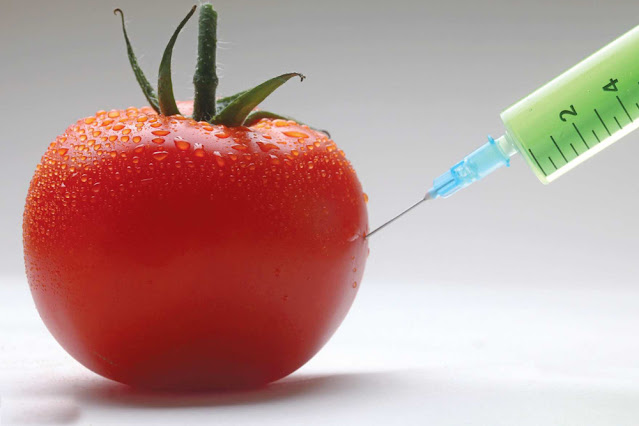Global Sanger Sequencing Market: Comprehensive Analysis
 |
| Sanger Sequencing Market |
Sanger
sequencing, often known as the "chain termination method," is a
method for determining the nucleotide sequence of DNA. Sanger sequencing
performs best for variant screening studies with a small total number of
samples. For variant screening studies involving high sample sizes, amplicon
sequencing combined with Next Generation Sequencing (NGS) is a more effective
and affordable technique.
The Global Sanger Sequencing Market refers to the commercial
ecosystem surrounding the use of Sanger sequencing technology, a method for
determining the nucleotide sequence of DNA. This technology is essential for
various applications, including genetic research, clinical diagnostics, and
forensic analysis. Despite the rise of next-generation sequencing (NGS) technologies,
Sanger sequencing remains a gold standard due to its accuracy and reliability.
The Global
Sanger Sequencing Market encompasses the sales, distribution, and development
of sequencing reagents, instruments, and associated services.
Global Sanger sequencing market is estimated to be valued at USD 3,149.9 Mn in 2024, and
is expected to reach USD 10,130.6 Mn by 2031, exhibiting a compound annual growth rate (CAGR) of 18.2% from 2024 to
2031.
Key Players
in the Global Sanger Sequencing Market
The Global Sanger Sequencing Market is dominated by several
key players who drive the industry through innovation and extensive market
reach. Prominent companies include Thermo Fisher Scientific, Agilent
Technologies, PerkinElmer, Bio-Rad Laboratories, and Beckman Coulter. Thermo
Fisher Scientific leads the market with a broad portfolio of sequencing
products and services, renowned for their high quality and precision. Agilent
Technologies is another significant player, known for its advanced sequencing
kits and automated systems that enhance workflow efficiency in the Global
Sanger Sequencing Market.
Market Key
Trends in the Global Sanger Sequencing Market
Several key trends are shaping the Global Sanger Sequencing
Market. One notable trend is the integration of Sanger sequencing with NGS
technologies to improve the accuracy and validation of sequencing results.
Additionally, there is a growing demand for personalized medicine, which relies
heavily on precise genetic information provided by Sanger sequencing. Advances
in automation and miniaturization of sequencing instruments are making Sanger
sequencing more accessible and user-friendly. These trends are collectively driving
innovation and expansion in the Global Sanger Sequencing Market.
Porter
Analysis of the Global Sanger Sequencing Market
A Porter analysis provides insights into the competitive
dynamics of the Global Sanger Sequencing Market:
Threat of
New Entrants: The threat of new entrants is low due to high barriers to
entry, including significant capital investment and stringent regulatory
requirements. Established companies in the Global Sanger Sequencing Market
benefit from economies of scale and brand recognition.
Bargaining
Power of Suppliers: The bargaining power of suppliers is moderate. While
there are numerous suppliers of raw materials and reagents, the quality and
reliability of these supplies are critical, giving established suppliers some
leverage in the Global Sanger Sequencing Market.
Bargaining
Power of Buyers: The bargaining power of buyers is high. Customers
have several options, including alternative sequencing technologies like NGS,
which can influence pricing and service offerings in the Global Sanger
Sequencing Market.
Threat of
Substitutes: The threat of substitutes is moderate. NGS technologies
provide faster and more comprehensive sequencing solutions but may lack the
accuracy required for certain applications, ensuring continued demand for
Sanger sequencing in the Global Sanger Sequencing Market.
Industry
Rivalry: Industry rivalry is high due to the presence of several
established players and continuous technological advancements. Companies
compete on innovation, quality, and cost-effectiveness in the Global Sanger
Sequencing Market.
Geographical
Regions in the Global Sanger Sequencing Market
The Global Sanger Sequencing Market is segmented into key
geographical regions, including North America, Europe, Asia-Pacific, Latin
America, and the Middle East & Africa. North America holds the largest
market share, driven by extensive research activities, advanced healthcare
infrastructure, and significant investments in biotechnology. Europe follows
with substantial growth, supported by government funding for genomics research
and strong academic institutions. The Asia-Pacific region is experiencing rapid
growth due to increasing healthcare expenditures, rising awareness of genetic
disorders, and expanding research capabilities. Latin America and the Middle
East & Africa are also growing markets, benefiting from improved healthcare
access and ongoing investment in research infrastructure. These regions
collectively contribute to the dynamics of the Global Sanger Sequencing Market.
Segment
Analysis of the Global Sanger Sequencing Market
The Global Sanger Sequencing Market can be segmented based on
product type, application, end-user, and region.
By Product
Type: The market includes sequencing instruments, reagents and
consumables, and software and services. Sequencing instruments form the largest
segment due to their essential role in the sequencing process. Reagents and
consumables are critical for ongoing operations and drive recurring revenue in
the Global Sanger Sequencing Market.
By
Application: Applications include diagnostics, research, and forensic
analysis. Research applications dominate the market, driven by extensive use in
genetic studies and validation of NGS results. Diagnostics is a rapidly growing
segment due to the increasing adoption of genetic testing in clinical settings
in the Global Sanger Sequencing Market.
By End-User: The
market serves academic and research institutes, hospitals and clinics, and
pharmaceutical and biotechnology companies. Academic and research institutes
represent the largest end-user segment due to their significant role in
genomics research. Hospitals and clinics are expanding end-users, reflecting
the integration of genetic testing into routine medical practice in the Global
Sanger Sequencing Market.
The Global Sanger Sequencing Market is a vital component of
the genomics and biotechnology sectors, characterized by its accuracy and
reliability in DNA sequencing. Key players like Thermo Fisher Scientific and
Agilent Technologies lead the market through innovation and extensive product
offerings. Market growth is driven by key trends such as the integration with
NGS technologies, advancements in automation, and the increasing demand for
personalized medicine. A detailed Porter analysis and segmentation by
geographical regions and product types provide a comprehensive understanding of
the market dynamics. The Global Sanger Sequencing Market is poised for
sustained growth, driven by continuous technological advancements and expanding
applications across various sectors.
Get more insights on Global
Sanger Sequencing Market
Get more related content on Global
Sanger Sequencing Market



Comments
Post a Comment